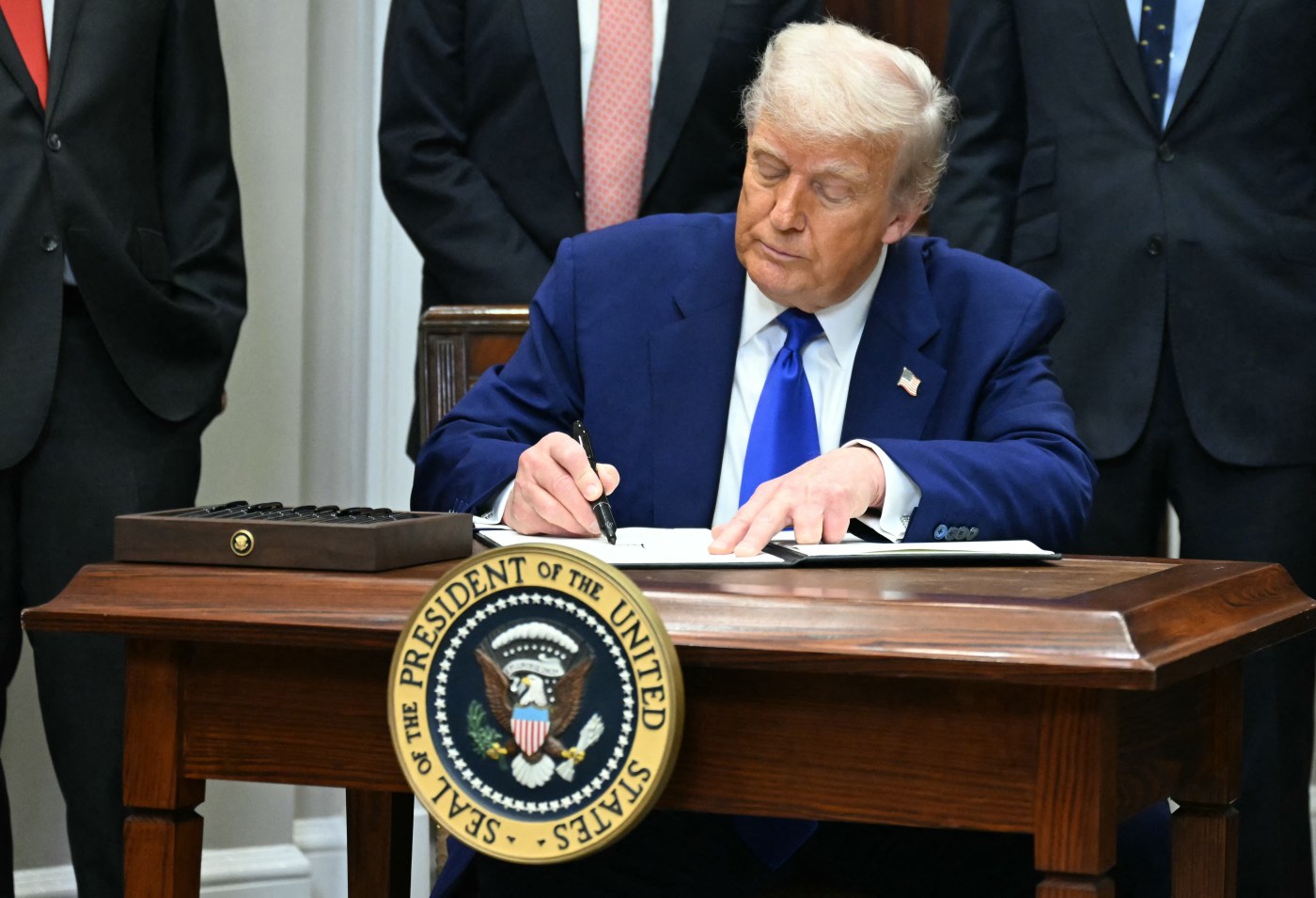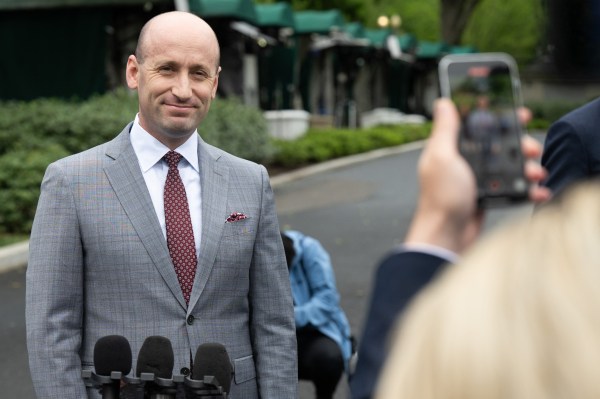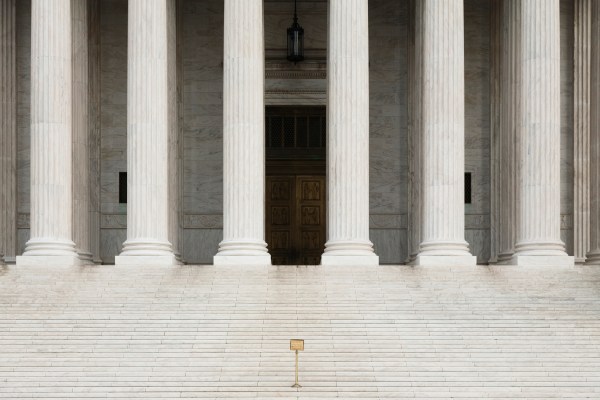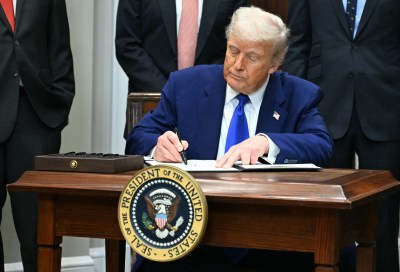Turn any article into a podcast. Upgrade now to start listening.
Premium Members can share articles with friends & family to bypass the paywall.
To understand the Supreme Court’s oral arguments last week in Trump v. CASA, on whether lower courts have the power to issue “nationwide injunctions” blocking President Donald Trump’s executive order ending birthright citizenship, it is useful to start with a seemingly mundane case decided almost exactly a decade ago, one that exemplified—and accelerated—the modern era of anti-administration lawsuits.
In Michigan v. EPA, a number of states and industry groups challenged the Obama administration’s regulations mandating stricter air-quality standards for coal-fired power plants. On its face, it was a garden-variety technical dispute over the Environmental Protection Agency’s rulemaking process, the kind of stuff that can easily put law students and young lawyers to sleep. (As an occasional law professor, I know this all too well.) The EPA issued its rules in early 2012 and lawsuits were filed immediately, but the lower court needed two years of briefing, oral argument, and further deliberations before ruling in favor of the EPA. Then the challengers went to the Supreme Court; eventually, in 2015, the Supreme Court ruled against the EPA.
None of this was particularly novel—the crucial constitutional moment came next. Immediately after losing, the EPA boasted that the court’s decision was actually a moot point. “EPA is disappointed that the court did not uphold the rule,” the agency told Reuters, “but this rule was issued more than three years ago, investments have been made and most plants are already well on their way to compliance.” A senior EPA official even blogged that, “the majority of power plants are already in compliance or well on their way to compliance.”
It was a blunt lesson in executive speed and power: When litigation takes years from start to finish, an administration can impose its will faster than the courts can resolve their cases. It was also, in hindsight, a turning point.
When the EPA issued another major rule, the late-2015 “Clean Power Plan” for greenhouse gas regulations, litigants quickly petitioned the courts to “stay” the rule—to freeze it in place—while the litigation was getting underway. The challengers pointed to the EPA’s post-Michigan victory lap as an example of why administrative action needs to be frozen at the outset of litigation. And the Supreme Court got the point, issuing an order in early 2016 to block the EPA from implementing the new regulations until the cases could be fully litigated.
Since then, the fight over how courts should act at the beginning of major lawsuits has become a central feature of anti-administration litigation. When plaintiffs file lawsuits against executive orders or agency regulations, they increasingly ask the trial judge to issue a “temporary restraining order” or “preliminary injunction” blocking the administration’s action. Then the parties quickly appeal up the judicial chain to higher courts, eventually the Supreme Court. In the federal trial courts, these orders are known as “nationwide injunctions” or “universal injunctions,” because they block an administration from imposing its policy against not only the challenger in that given case, but against people everywhere.
These universal injunctions have become a central feature of constitutional and regulatory litigation. According to the Harvard Law Review, the Bush and Obama administrations were blocked by only six and 12 nationwide injunctions, respectively, but the first Trump administration received 64. The Biden administration received only 14, but by one count the new Trump administration has already received 40.
The fact that a single federal judge can issue a nationwide injunction blocking a president’s executive order or regulatory program seems counterintuitive. There are 677 federal district judgeships, and parties trying to oppose the president’s latest policy need to find only one judge to stop the administration in its tracks, sometimes just days or even hours after the administration acts.
Litigants have significant leeway in choosing which trial court to file their case, so these injunctions can take on an overwhelmingly partisan color. During the previous Trump administration, challengers filed in blue-state federal courthouses. During the Biden administration, litigants favored federal judges in Texas. Now, in the Trump era, it’s back to the blue states. According to the Harvard Law Review, 92 percent of nationwide injunctions against the first Trump administration were issued by Democratic-appointed judges, and 100 percent of nationwide injunctions against the Biden administration were issued by Republican-appointed judges.
Now that Trump is issuing a tidal wave of executive orders and other actions—to dismantle agencies, defund federal programs, and deport illegal immigrants to El Salvador—the fights over nationwide injunctions and the Supreme Court’s emergency orders have become more politically significant than ever.
The administration’s efforts to impose its will faster than courts can keep up has made the stakes of these procedural fights painfully clear. In the deportation cases, the administration’s suggestion that courts are powerless to undo the deportations once prisoners are shipped out of the country has clearly caused the justices to be much more proactive in granting preliminary relief. On Friday, the court issued an order blocking the administration from deporting more Venezuelan immigrants under the Alien Enemies Act. “District courts should approach requests for preliminary relief with care and consideration,” the court explained, “but exigent circumstances may impose practical constraints” when an agency is poised to take actions that may be irreparable by the time the litigation ends. Justice Samuel Alito dissented (with Justice Clarence Thomas joining him), with an opinion raising significant questions over whether the court’s intervention was procedurally and factually premature—indeed, whether the court even had jurisdiction at all. But the seven-justice majority clearly believed that even a short delay of judicial relief might leave more immigrants stranded in a far-flung foreign prison—a stark vote of no-confidence in the Trump administration’s nominal reassurances to the contrary.
In more normal times, the government would have walked into the Trump v. CASA case with significant judicial wind in its sails. As my colleague Jack Goldsmith observed recently at Executive Functions, at least six justices already recognized the practical or constitutional questions surrounding the modern wave of nationwide injunctions. “Five Justices—Thomas, Alito, Gorsuch, Kavanaugh, and Barrett—had embraced various degrees of doubt about universal injunctions prior to oral argument,” Goldsmith writes, and “Justice Kagan had expressed doubt about them in off-Court remarks.”
That is, Justices Neil Gorsuch, Alito, and Thomas have worried that nationwide injunctions, when granted quickly at the front end of litigation, are “almost by design a fast and furious business,” which too often “circumvent normal judicial processes and ‘tend to force judges into making rushed, high-stakes, low-information decisions.’” Similarly, Justices Brett Kavanaugh and Amy Coney Barrett have warned that the rushed proceedings for nationwide injunctions are “not always optimal for orderly judicial decisionmaking.” Justice Elena Kagan, speaking at Northwestern Law in 2022, observed that “it just can’t be right that one district judge can stop a nationwide policy in its tracks and leave it stopped for the years that it takes to go through the normal process.”
And Thomas, in the 2018 case upholding President Trump’s travel ban, raised more fundamental concerns: “I am skeptical that district courts have the authority to enter universal injunctions. These injunctions did not emerge until a century and a half after the founding. And they appear to be inconsistent with longstanding limits on equitable relief and the power of Article III courts.”
That was the crux of the Justice Department’s argument in Trump v. CASA. In its briefs and at oral argument, the Justice Department argued that the Constitution’s Article III, which defines the powers of federal courts, does not allow those courts to grant relief on behalf of third parties not present in that specific case. Furthermore, the statutes empowering courts to grant “equitable” relief—namely, injunctions—should not be read as allowing granting courts the power to enjoin the government from acting against people who aren’t parties to the case.
In short, the government argued, nationwide injunctions are a sharp break from the nation’s constitutional and jurisprudential traditions, and if litigants want to block the government nationwide then the only possible options are class-action lawsuits (which, the government further argued, might not be allowed in cases like these), or with their own tidal wave of individual lawsuits filed on behalf of every person who wants to be protected against the government’s actions. The government further resisted conceding that a negative judicial decision from any court, short of the Supreme Court, could necessarily bind the administration from enforcing a court-blocked policy against parties who weren’t in that particular court case.
As SCOTUSblog’s Amy Howe explains in her post-argument analysis, virtually all of the justices raised significant doubts about the breadth of the Trump administration’s arguments, and the enormous practical problems that the administration’s proposal would present for those who face swift executive action and strategic executive tactics to avoid litigation.
To be sure, several justices reiterated their previous concerns about the trend in nationwide injunctions against presidential administrations. Alito noted the palpable “practical problem” that is created “when there are 680 district court judges,” any one of whom can issue an injunction instantly blocking an administration’s program nationwide—a problem exacerbated by litigants’ ability to choose where they file their cases. Kagan echoed those concerns, noting that “because of the forum selection process, a party goes to one place. You know, in the first Trump administration, it was all done in San Francisco, and then, in the next administration, it was all done in Texas.”
Meanwhile, several justices raised concerns about the administration’s preferred approach—requiring challengers either to file class-action lawsuits or to file dozens or hundreds (or even thousands) of individual cases on behalf of every affected person willing to personally litigate against the president’s administration. Many cases simply will not be fit for class-action certification, because the factual differences among plaintiffs would prevent class-action procedures for the shared legal issue. And the case-by-case approach would present a “‘catch me if you can’ kind of regime from the standpoint of the executive,” as Justice Jackson put it, “where everybody has to have a lawyer and file a lawsuit in order for the government to stop violating people’s rights.”
That point seemed particularly troubling to several of the justices, and all the more so as Solicitor General John Sauer spelled out the administration’s position in greater detail. As Howe reports at SCOTUSblog, “Sauer ran into hot water with Barrett … when she pressed him on whether the Trump administration would follow a ruling by the U.S. Court of Appeals for the 2nd Circuit in the case of an individual plaintiff when it came to others challenging the executive order. Sauer responded that the Department of Justice would ‘generally’—but not always—follow the court of appeals’ decision.”
That line of argument also fell flat with Kagan—herself a former solicitor general: “you’re going to be saying, no you know, we only commit to saying it's illegal to this one guy who brought the suit,” she quipped. According to Sauer, the only judicial decision that would command the administration’s complete adherence would be the Supreme Court’s own decision, “a nationwide precedent that the government would respect.”
That is a remarkable statement, given that the entire underlying case—a challenge to President Trump’s executive order ending birthright citizenship—is a direct challenge to the court’s long-settled precedent, United States v. Wong Kim Ark (1898), which for more than a century has been the authoritative interpretation of the 14th Amendment’s citizenship clause.
But the administration’s argument also made plain the choice before the justices, at least as the administration frames it. Either the court will channel future constitutional and regulatory litigation into a scattered galaxy of individual lawsuits, a dispersion that will give presidents and their agencies maximum opportunities for gamesmanship, or the court would allow nationwide injunctions to remain an option for many future cases.
Given that choice, perhaps the most likely outcome is one that rejects the administration’s sweeping argument against nationwide injunctions yet also tries to mitigate the practical problems of nationwide injunctions by emphasizing that lower courts must not grant such injunctions willy-nilly.
It is not hard to imagine the court, perhaps in an opinion by Chief Justice John Roberts, issuing a decision that rejects the administration’s core argument but also reminds the lower courts that nationwide injunctions are not to be given out haphazardly. Such an opinion might tell district courts to be mindful of their obligation to tailor their injunctions narrowly to grant relief that is necessary but no more than that; that sometimes class-action litigation or case-specific remedies are, in fact, appropriate alternatives to nationwide relief; that the frantic process around preliminary injunctions creates a real risk of judicial error; and that forum-shopping creates a real risk that the public will start to see the entire practice as less judicial than political.
Unless the Trump administration has convinced five justices that the Constitution and statutes clearly prohibit the use of nationwide injunctions—and that seems unlikely, at least based on the oral arguments—then this kind of mend-it-but-don’t-end-it opinion might be the most likely outcome, and rightly so.
It bears emphasizing that while the logical and practical ramifications of the administration’s position is jarring, the argument starts from a reasonable and important premise: It takes only one district judge among nearly 700 to shut down an executive order or agency regulation. To sustain an executive order or new regulatory program, the government needs to run the judicial table. As Sauer stressed in his opening statement, this system forces “the government to win everywhere while the plaintiffs can win anywhere.”
His recent predecessors surely felt the same frustrations. Solicitor General Elizbeth Prelogar raised similar legal and practical concerns in a Biden administration brief asking the court to consider ending nationwide injunctions. (Full disclosure: That brief was filed in litigation brought by the Center for Individual Rights, whose board I now chair.) But Sauer put the point much more colorfully: The district courts’ assertion of power to block an administration policy nationwide “yields all these sort of pathologies, so to speak, of the current practice of issuing them very, very easily.”
But that argument is darkly ironic. District courts surely have issued some nationwide injunctions too easily. But they pale in comparison to the ease with which modern presidents—especially Trump 2.0—issue executive orders and other edicts purporting to singlehandedly remake the global economy through new tariffs, or to dismantle entire federal agencies, or to punish people or institutions or universities for perceived offenses. Or, for that matter, to end birthright citizenship for millions of people.
If anything has caused “pathologies” in our modern government, it is that—the executive branch’s assertion of enormous unilateral control over American laws and lives, a trend that the Trump administration’s approach to governance so far is exacerbating. Sauer is surely right that the Founders would be surprised by a future in which individual trial judges have become so important. But more importantly, Roberts was surely right that “the Framers could hardly have envisioned today’s ‘vast and varied federal bureaucracy’ and the authority administrative agencies now hold over our economic, social, and political activities.” And the rise of nationwide injunctions is simply an echo of the rise of presidential and administrative policymaking power.
Justice Kavanaugh put this point well, midway through the Trump v. CASA arguments, during his questions to the solicitor general:
You mentioned before this has come up in the last four or five administrations primarily. You know, I guess I’ve thought about that a lot too. Why? … [I]t’s harder to get legislation through Congress, particularly with the filibuster rule. Presidents want to get things done with good intentions. The executive branches that work or those presidents push hard to—when they can’t get new authority—to stretch or use existing authority, and they've been pushing, understandably, all with good intentions. All the presidents, both parties, right, with good intentions, pushing.
…
[T]he underlying point is that these district judges are not just doing universal injunctions; they’re finding these [administrative] actions illegal because they’re exceeding existing authority, and oftentimes we are too when it gets to us, finding the actions of presidents of both parties unlawful because they exceeded existing authority.
That is the real problem underlying all of this. Congress has delegated virtually its entire legislative power to the executive branch, over the course of the last century and a half. Congress spent a century encouraging presidents to act as the nation’s lawmaker-in-chief, and now presidents routinely make executive-branch laws affecting thousands or millions of Americans in one fell swoop. And when those instant edicts spur instant litigation, federal trial judges are left to decide whether a ruling against the administration’s seemingly unlawful action should bind the president completely, or only as to the plaintiffs at hand.
This creates problems for government, and judges exacerbate the problem when they make incorrect decisions. But judges did not create the problem. Presidents created this problem through unrestrained assertions of power. More fundamentally, Congress created this problem by largely freeing presidents from legislative restraints.
As it happens, Congress could fix the specific problems that arise when litigants are largely free to pick the trial courts that would adjudicate their cases and grant their nationwide injunction requests. I’ve long called for Congress to legislate a lottery system for such cases, so that a litigant who wants a nationwide preliminary injunction would be sent to a randomly determined judge. Or, to further mitigate the dangers of letting one judge decide such momentous issues, the cases could be sent to random three-judge panels.
But most importantly, Congress needs to reclaim its legislative power and reform the laws that turned the presidency into a one-man national legislature. Until then, we will face an endless choice between powerful judges and all-powerful presidents.







Please note that we at The Dispatch hold ourselves, our work, and our commenters to a higher standard than other places on the internet. We welcome comments that foster genuine debate or discussion—including comments critical of us or our work—but responses that include ad hominem attacks on fellow Dispatch members or are intended to stoke fear and anger may be moderated.
With your membership, you only have the ability to comment on The Morning Dispatch articles. Consider upgrading to join the conversation everywhere.